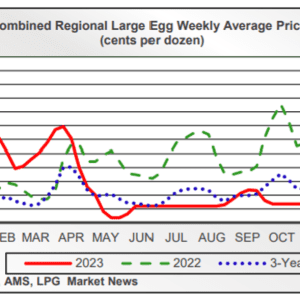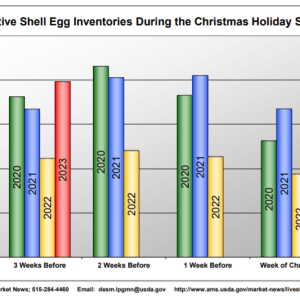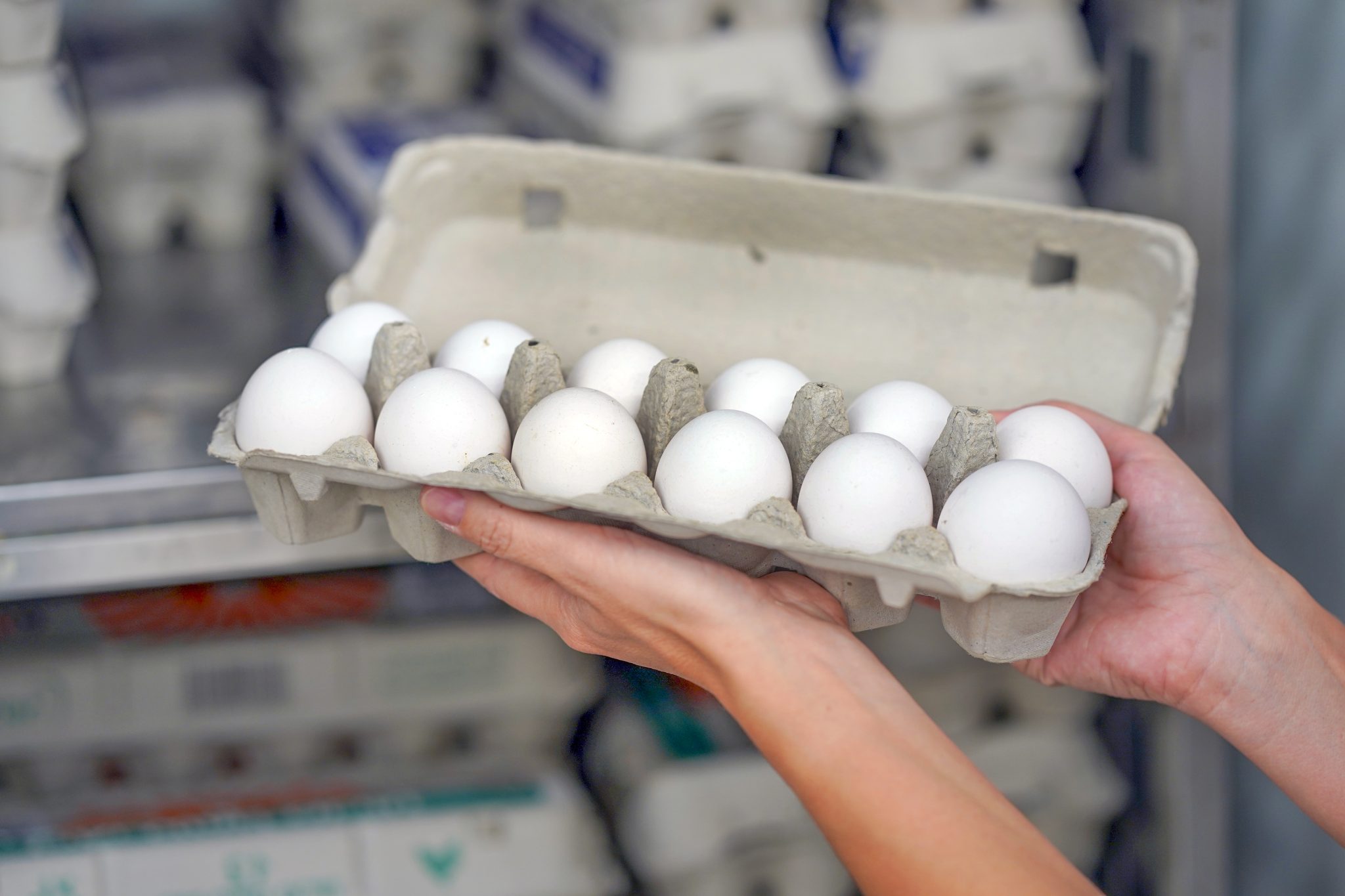Commercial Poultry

Many baking recipes call for eggs. Americans love to bake, especially during the holidays. This seasonal demand typically causes a short, but often sharp uptick in table egg prices around this time of year (figure 1). Egg markets also typically experience a short price spike in early spring corresponding with Easter. These price spikes are mostly demand driven but can certainly respond to supply pressure as well. We saw this distinctly around this time of year in 2022 when the egg inventory reached a historic low as Highly Pathogenic Avian Influenza (HPAI) decimated the layer populations in the egg-producing states – losing more than 43 million laying hens and producing almost 30% fewer eggs. Concurrently, Americans were entering holiday demand. High demand with low supply almost always produces increasing prices. Prices reached as high as $5.30+ per dozen during this time.

Figure 1. Combined Regional Large Egg Weekly Average Prices (cents per dozen)
A quick study of figure 2 shows that the current egg inventory (red bars) has rebounded strongly and is larger than both 2020 and 2021. Conversely, it is easy to see how the inventory shortage we suffered in 2022 contributed to the aforementioned high prices. When hen numbers rebounded, and HPAI impact subsided, egg prices went from the historic highs of 2022 to historic lows of below $0.90 per dozen after Easter 2023 and have stayed relatively low until the current typical holiday increase began. Looking at the inventories currently on hand, consumers should reasonably expect egg prices to stay within ‘normal’ ranges for the season and likely drop quickly back to the recent lows (assuming HPAI does not cause the great loss of hens we saw last season).

Figure 2. Relative Shell Egg Inventories During the Christmas Holiday Season
Unfortunately, HPAI is resurging again in commercial and backyard flocks, with 47 U.S. states reporting impacts and 24 states having confirmed infections in the last month. So far, the massive laying hen losses of 2022 have not occurred. Only 5,108,800 commercial laying hens have been impacted in 2023 at the time of this writing. However, harsh weather has yet to spur the major migration of wildfowl, HPAI’s primary vector for spreading the virus. It is yet to be seen if increased biosecurity measures and ever-improving quarantine procedures can keep the worst impacts at bay. But so far, holiday baking season looks to be in good shape for eggs.

